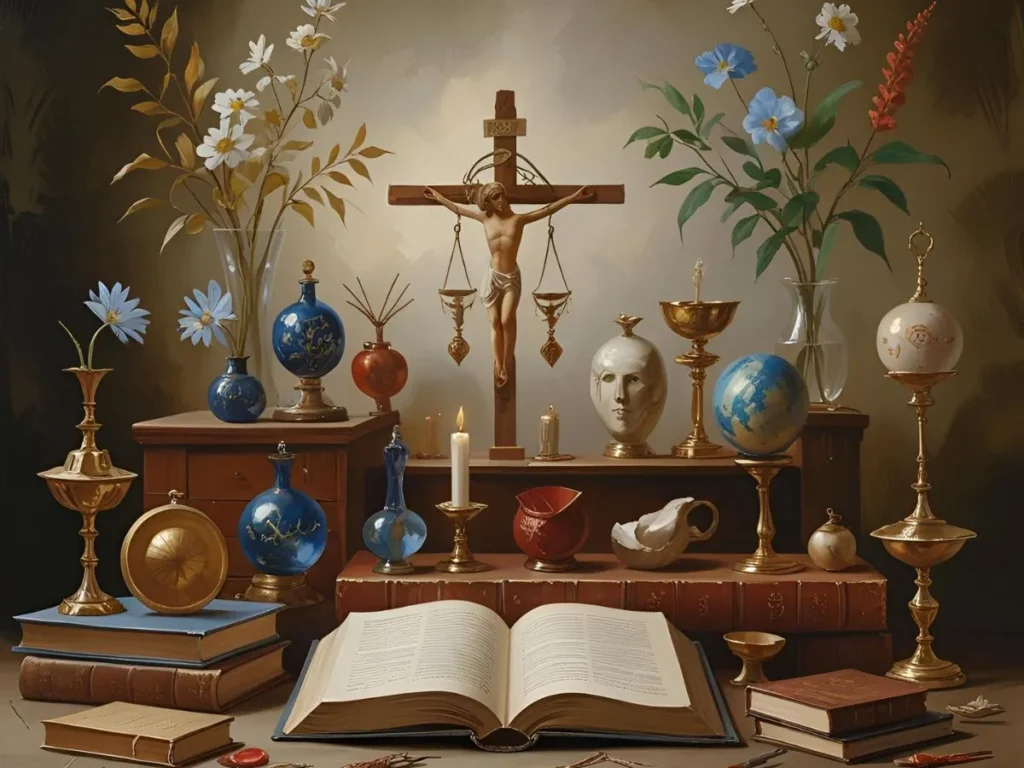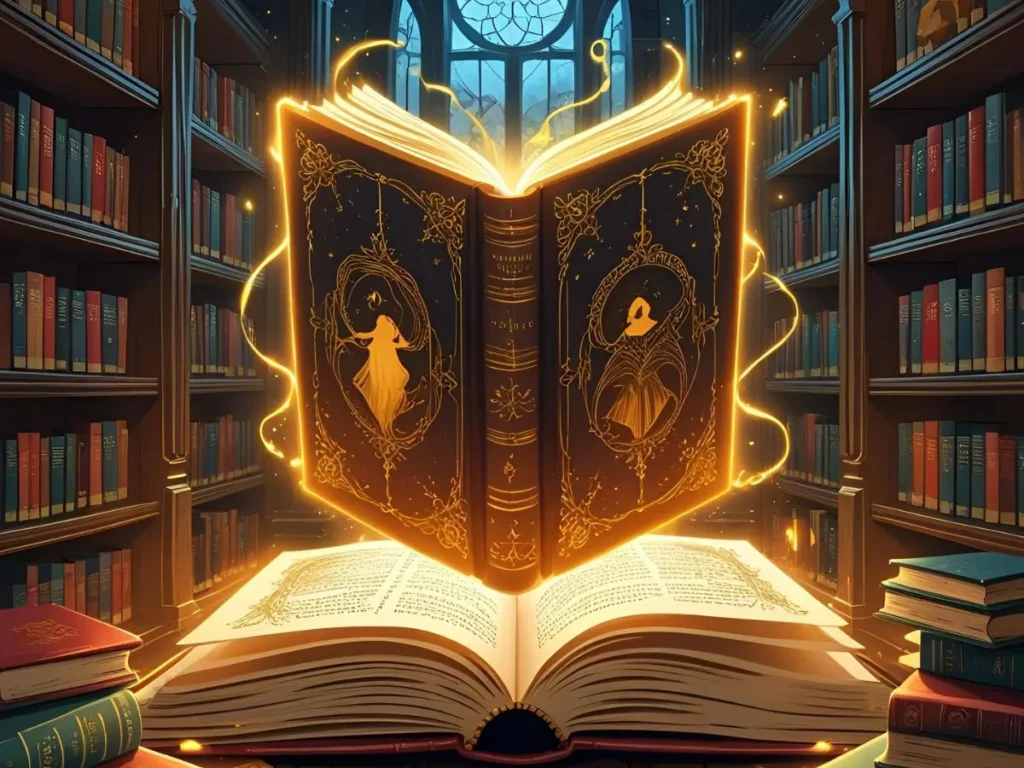One rainy afternoon, I sat on a park bench, watching a little boy chase a feather floating in the breeze. He giggled, unaware that the moment mirrored a deeper truth.
The feather reminded me of Forrest Gump—a simple object holding a powerful message. In Forrest Gump, the feather is a symbol of life’s unpredictability. That moment stayed with me.
Symbolism in literature is just like that—something small, like a feather or a colour, can hold a big emotional truth. Whether it’s a raven that speaks of death or a green light glowing with hope, symbolism helps us feel stories deeply.
In this article, we’ll explore examples of symbolism in literature that help unlock meaning behind the words. And for those on a spiritual journey, symbolism opens a portal into our hearts and souls—especially when animals show up in our path.
Famous Examples of Symbolism in Literature

Some literary symbols are unforgettable. They stay with us long after the final page. Here are some of the most famous examples of symbolism in literature:
- The Green Light in The Great Gatsby
This light represents Gatsby’s hopes and dreams—especially his longing for Daisy. But it’s also a symbol of the American Dream, showing how desire can be both beautiful and unreachable. - The Scarlet Letter in Nathaniel Hawthorne’s The Scarlet Letter
The letter “A” pinned to Hester Prynne is a symbol of adultery—but over time, it becomes a symbol of strength and transformation. - The Mockingbird in To Kill a Mockingbird
Atticus Finch tells his children not to kill mockingbirds because they only make music and do no harm. The bird becomes a powerful symbol of innocence and kindness, especially in relation to characters like Tom Robinson. - The Conch Shell in Lord of the Flies
The conch represents law and order in the boys’ world. As it loses power, so does their sense of right and wrong.
These examples show how symbolism helps readers feel things beyond the words—emotions like hope, sorrow, justice, and freedom.
What Are Some Examples of Symbolism in Literature?
Symbolism is everywhere in literature. Here are more examples that speak to both emotional and spiritual themes:
- Light and Darkness: Often used to represent good and evil, or knowledge and ignorance. In Heart of Darkness by Joseph Conrad, light and dark play with the ideas of civilization vs. savagery.
- Seasons: Spring is often rebirth, summer is life, fall is aging, and winter is death or stillness.
- The Raven in Poe’s The Raven: This bird isn’t just a bird—it’s a symbol of grief, death, and the endless pain of loss.
Animals, in particular, are spiritually powerful symbols. In literature and life, they often appear as guides. A butterfly might symbolize transformation.
A snake might mean danger—or hidden knowledge. These symbols awaken something deep in our souls.
Non-Examples of Symbolism in Literature

It’s just as important to know what isn’t symbolism. Not every object or animal is a symbol. Here are a few non-examples of symbolism in literature:
- Literal Descriptions: If the author says, “The car was red,” and it only matters that the car is red for practical reasons (like it’s easy to find), that’s not symbolism.
- Background Elements: A tree in a scene may just be scenery unless it repeats or holds a deeper meaning.
- One-time Mentions: If something is never mentioned again or doesn’t carry extra emotional weight, it’s probably not a symbol.
Symbolism works when the object stands for something else—a feeling, a theme, a message. It invites the reader to look deeper.
Examples of Symbolism in Literature Sentences
Here are clear examples of symbolism in literature sentences, to help you recognize symbolism in action:
- “She wore black not for the funeral, but for the years of sorrow stitched into her soul.”
→ The color black symbolizes grief and emotional pain. - “The caged bird sang, not to be heard, but to remember freedom.”
→ The bird in a cage symbolizes oppression, and its song symbolizes hope or resistance. - “Each falling leaf whispered goodbye.”
→ Leaves falling are a symbol of loss, change, or even death.
These symbolic sentences deepen the emotional connection between the reader and the story.
Common Examples of Symbolism in Literature

Let’s look at symbols that show up again and again in books:
- Water: Life, cleansing, or emotional rebirth. In The Awakening by Kate Chopin, the sea symbolizes freedom and escape.
- Fire: Passion, anger, or destruction. In Fahrenheit 451, fire is both a symbol of destruction and, eventually, rebirth.
- Eyes: Awareness, judgment, or truth. Think of the billboard with Dr. T.J. Eckleburg’s eyes in The Great Gatsby.
These common examples of symbolism in literature appear often because they reflect universal feelings we all share—fear, desire, curiosity, and the need for transformation.
What Are Examples of Symbolism in Literature?
Still wondering what are examples of symbolism in literature? Here’s a quick list that blends emotion, spirituality, and story:
- The Road in The Road by Cormac McCarthy: Symbolizes life’s journey and the struggle to protect love and hope in dark times.
- The Whale in Moby-Dick: Can symbolize the unknowable, obsession, or even God.
- Blood in Macbeth: A symbol of guilt and moral consequence.
Each symbol connects us not just to the story—but to something deeper within ourselves.
Best Examples of Symbolism in Literature

Here are the best examples of symbolism in literature that offer both emotional weight and spiritual insight:
- The Phoenix: A mythological bird that dies in flames and rises again. A symbol of rebirth and eternal hope. Found in Harry Potter and other myth-based works.
- The Albatross in The Rime of the Ancient Mariner: A symbol of burden and spiritual guilt.
- The Yellow Wallpaper in Charlotte Perkins Gilman’s story: Represents oppression and mental illness, especially for women in history.
These powerful symbols reach far beyond the page. They help readers heal, awaken, and reflect.
What Are Some Common Examples of Symbolism in Literature?
If you’re trying to learn or teach symbolism, here are a few easy-to-spot, common examples:
- Storms → Conflict or emotional turmoil
- Windows → Perspective or freedom
- Chains → Restriction or slavery
- Birds → Freedom or the soul
- Flowers → Growth, beauty, or even decay depending on the type (e.g., a wilting rose = fading love)
Learning to spot these symbols can make reading feel magical—and personally meaningful.
Three Short Real-Life Scenarios: Symbolism in Action
1. The Stray Dog at the Crossroads
A woman struggling with a life decision sees a stray dog standing at a crossroads. Unsure of which path to take, she notices the dog calmly choosing the left road. She follows. The dog becomes a symbol of intuition and spiritual guidance.
2. The Butterfly at the Funeral
During her grandmother’s funeral, a young girl sees a bright orange butterfly land on the casket. It flutters there, then soars into the sky. For her, the butterfly becomes a symbol of the soul’s release—and her first comfort in grief.
3. The Broken Mirror Before a Breakup
Before ending a toxic relationship, a man accidentally breaks a mirror. Though unsettled at first, he later sees it as a symbol of shattering illusions—and stepping into a new, honest version of himself.
These small moments reflect how symbolism shows up in real life, not just books.
FAQs
1. Why is symbolism important in literature?
Symbolism helps readers connect emotionally and spiritually with a story. It adds layers of meaning beyond the literal words.
2. Can animals be symbols in literature?
Yes! Animals like lions, owls, snakes, and butterflies often carry deep symbolic meaning—like strength, wisdom, transformation, or danger.
3. What is the difference between a theme and a symbol?
A theme is the big idea (like love, war, or change). A symbol is something in the story (like a rose or a storm) that represents part of that theme.
4. Can colors be symbols?
Absolutely. For example, white can mean purity or emptiness, red can mean passion or danger, and blue might symbolize sadness or peace.
5. How do I know if something is a symbol or not?
Ask yourself: Does this object repeat? Does it carry deeper meaning? Does it connect to the character’s emotions or journey? If yes, it’s likely a symbol.
Conclusion:
When we open a book—or walk through the world—with open eyes, symbols start to appear.
They’re not always loud. Sometimes it’s a feather, a dog, a storm cloud, or a falling leaf. But when we pause, we see their meaning.
In literature, symbolism invites us to feel more deeply. In life, it reminds us we are always connected—to nature, to story, to soul. Whether you’re reading about a green light or a singing bird, remember: every symbol is a whisper from the heart.
Next time an animal crosses your path—or a symbol stirs something in your spirit—pause and listen. There’s a message there, just for you.



